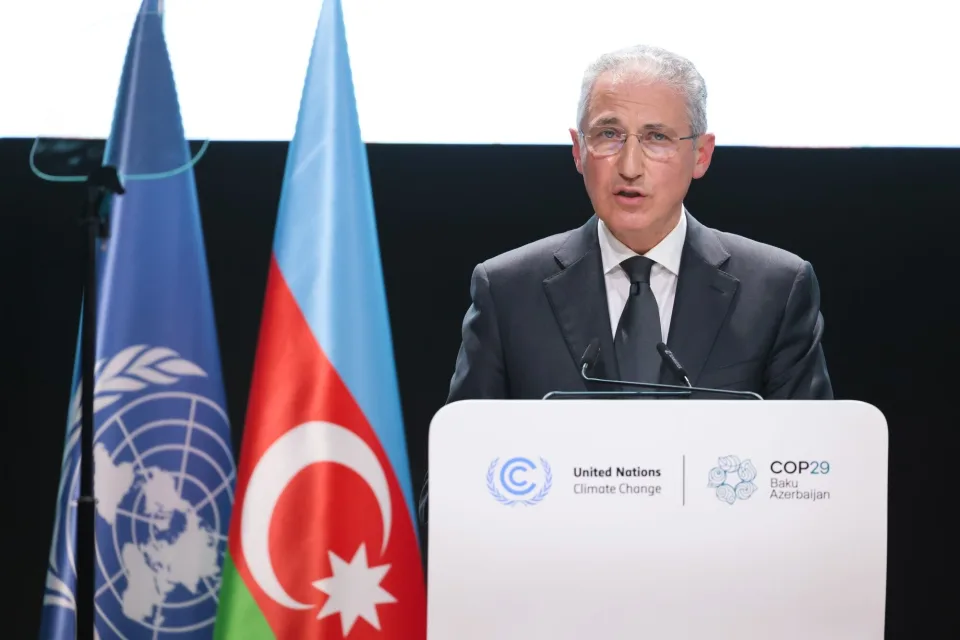
COP29 enters its final stretch with nations far apart on climate finance targets, ranging from $200 billion to $1.3 trillion annually. Can a deal be reached for developing economies?
As the COP29 summit in Baku nears its conclusion, nearly 200 nations remain at an impasse over a vital climate finance deal that could reshape the global response to climate change. The negotiations have become centered on the financial support that developed nations should provide to developing economies, with figures ranging from $200 billion to $1.3 trillion annually. This divide highlights the challenges of securing a consensus on climate finance goals, which are crucial for the next phase of global climate action.
Disagreement Over Climate Finance Targets
The gap between proposed climate finance targets has proven difficult to bridge. Some nations argue for a more ambitious goal, such as $1.3 trillion annually, to fund climate adaptation and mitigation projects in developing nations. Meanwhile, others contend that a target as high as this could be financially unfeasible, suggesting that $200 billion might be a more realistic figure. The climate finance debate has been ongoing for over a decade, with negotiators working tirelessly to find common ground.
The Azeri presidency is expected to release a draft deal in the coming hours, which will initiate another round of intense negotiations. As the summit approaches its conclusion, officials are working to reconcile the differences between the countries, especially concerning the types of funding—grants versus loans—that will be included in the deal.
Developing Nations Demand Fairer Access to Climate Finance
Many developing nations have voiced frustration over the disparity in financial commitments. While they acknowledge the importance of climate finance, they insist that the funds should come in the form of grants rather than loans, which would only exacerbate their existing debt burdens. The Alliance of Small Island States, which represents vulnerable nations, has expressed concern that relying on loans could create “unsustainable debt” for many developing nations.
Michai Robertson, a climate finance negotiator for the Alliance of Small Island States, warned that a deal based on loans could create “unsustainable debt” for many developing nations. He emphasized that these countries need trillions of dollars to transition to low-carbon economies, and market-rate loans or minimally discounted financing would not meet their needs.
New Sources of Climate Finance: Private Sector and Carbon Markets
One of the key proposals at COP29 is to expand the base of contributors to climate finance by tapping into new sources of funding. This includes multilateral development banks and the private sector, with the potential for loans and innovative financing mechanisms. One promising avenue discussed is the creation of carbon markets, where countries can buy and sell carbon credits. The COP29 summit saw a breakthrough on rules for a global carbon market, known as “Article 6.4,” which could provide another avenue for financing climate action.
The private sector has also been called upon to contribute more, with the Glasgow Financial Alliance for Net Zero estimating that it could provide $1 trillion annually to emerging markets by 2030. However, concerns have been raised that relying too heavily on private investment could lead to finance that comes with high-interest rates, further increasing the financial burden on developing nations.
The Role of Developed Nations in Climate Finance
The European Union and the United States have pushed for a broadening of the donor base, calling for more countries to contribute to the climate finance pledge. China, while not a traditional donor due to its status as a developing nation, has committed to participating voluntarily and has already provided substantial funds to developing nations to address climate change.
Despite these efforts, some developing nations remain wary of vague financial commitments. There are concerns that the trillion-dollar target might be undermined by unclear or inadequate sources of funding, particularly if loans or private-sector contributions with standard interest rates are counted.
Balancing Mitigation and Climate Finance Commitments
The negotiations at COP29 are also grappling with the balance between climate finance and mitigation targets. Developed nations have pushed to reaffirm COP28’s historic pledge to transition away from fossil fuels, emphasizing the importance of boosting efficiency and deploying renewable energy technologies. However, representatives from countries like Bolivia have warned that these mitigation discussions might overshadow the critical issue of climate finance.
There is also growing skepticism among developing nations about the adequacy of the financial commitments on the table. Some fear that if the finance pledge remains too low or relies on loans, it could undermine efforts to address the climate crisis effectively.
Can a Climate Finance Deal Be Reached?
As COP29 enters its final days, negotiators are under pressure to come to an agreement on climate finance that can satisfy both developed and developing nations. The gap between the proposed funding targets, combined with the debate over loans versus grants, presents a major obstacle. However, if negotiators can find common ground, the outcome could be a historic deal that reshapes the way the world addresses climate change funding for the future.
Conclusion: The Future of Climate Finance at COP29
The negotiations at COP29 underscore the urgency of securing a deal on climate finance that is equitable and sustainable. With the global climate crisis accelerating, the ability to mobilize adequate funding for developing economies will be key to ensuring a successful transition to low-carbon, climate-resilient economies. As discussions continue, the world waits to see if a deal can be reached that will meet the needs of those most vulnerable to climate change while fostering global cooperation.
